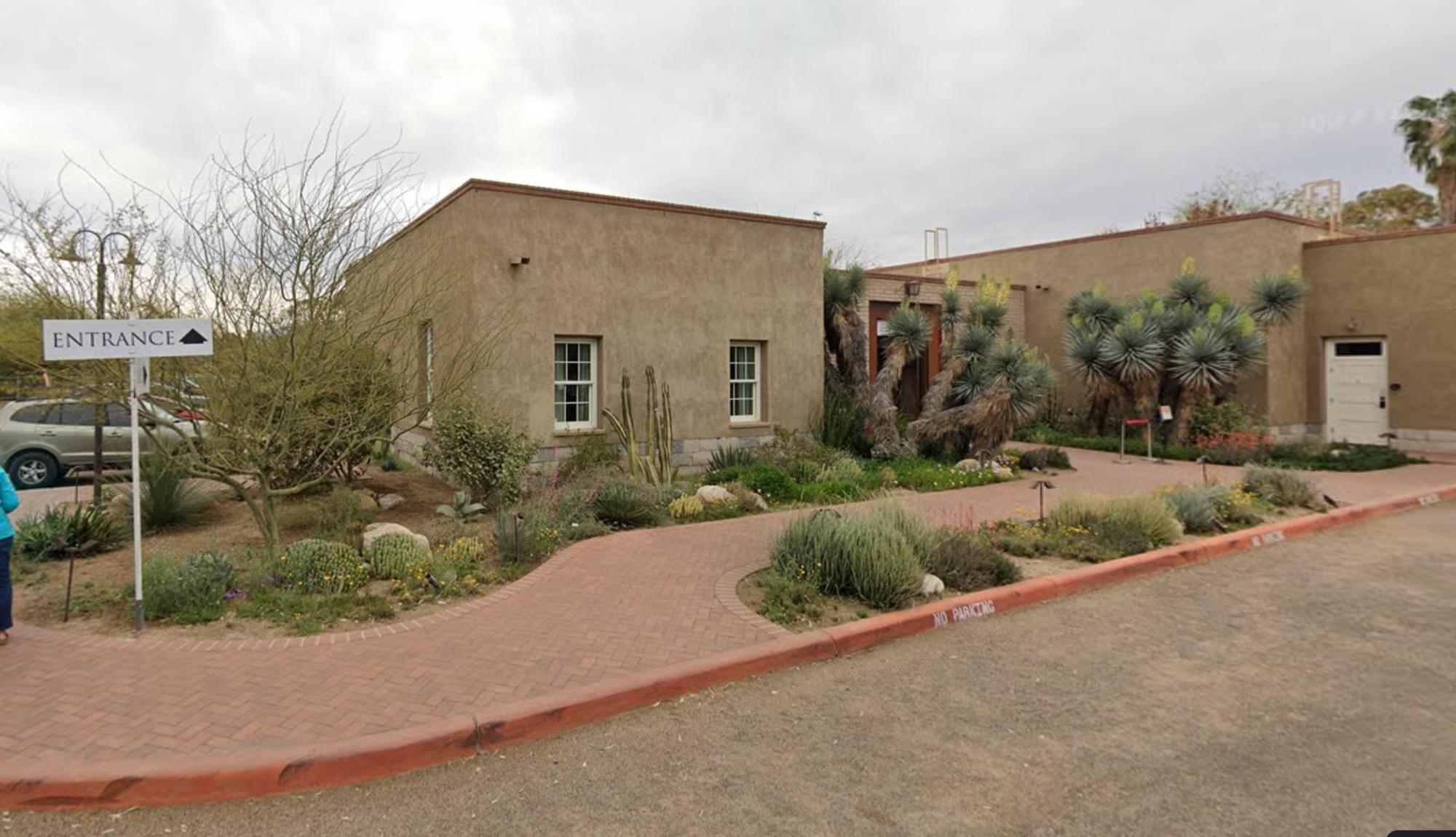Tucson Botanical Gardens

Tucson Botanical Gardens
2150 North Alvernon Way Tucson, Arizona 85712
Official WebsiteTucson Botanical Gardens map
About this Location
Garden hours: 8:30 a.m. to 4:30 p.m. Open seven days a week, year-round, except, July 4th, Thanksgiving, Christmas Eve and Day, and New Year’s Day. Summer Hours: June through August 7:00 a.m. to 4:30 p.m.
Admission fee.
On March 31, 1975, an article in the Tucson Daily Citizen stated, “A dream of 10 years is about to be realized when Tucson Botanical Gardens is officially established at a permanent site of North Alvernon Way.”
The entity known as “Tucson Botanical Gardens” was originally founded in 1964 by horticulturist and collector, Harrison G. Yocum. The gardens at his home on North Jefferson Street contained an extensive collection of cacti and palms and were open to the public. Memberships became available in 1968, and the group became chartered as a non-profit corporation the next year.
As the organization grew to 100 charter members, it found a new temporary home at Randolph Park, utilizing available display greenhouse space. Dr. Leland Burkhart, the UA professor of Horticulture, was president of the TBG at the time. The society began formulating a dream for its future and a permanent home was envisioned. Friends of TBG and local garden clubs organized fund-raising activities to further this purpose.
Meanwhile, Mrs. Bernice Porter was looking for a way to preserve her house and gardens, and by the early 70s, the union of Tucson Botanical Gardens with the Porter property became a reality. In 1974, the Tucson City Council passed Resolution 9384 which stated that the property would be used for the development of a botanical garden to serve as a horticultural center, a sanctuary for wild birds, and a center for education.
Then President Boyd Allen had the responsibility of melding the existing gardens with TBG’s dreams of the future. For Mrs. Porter, the arrangement meant saving the house and grounds. “We just didn’t want to see this place go down under a bulldozer,” she mused in the 1975 article, “Now it will continue to offer as much pleasure to others as we have enjoyed in the past.”
Content from Official Website